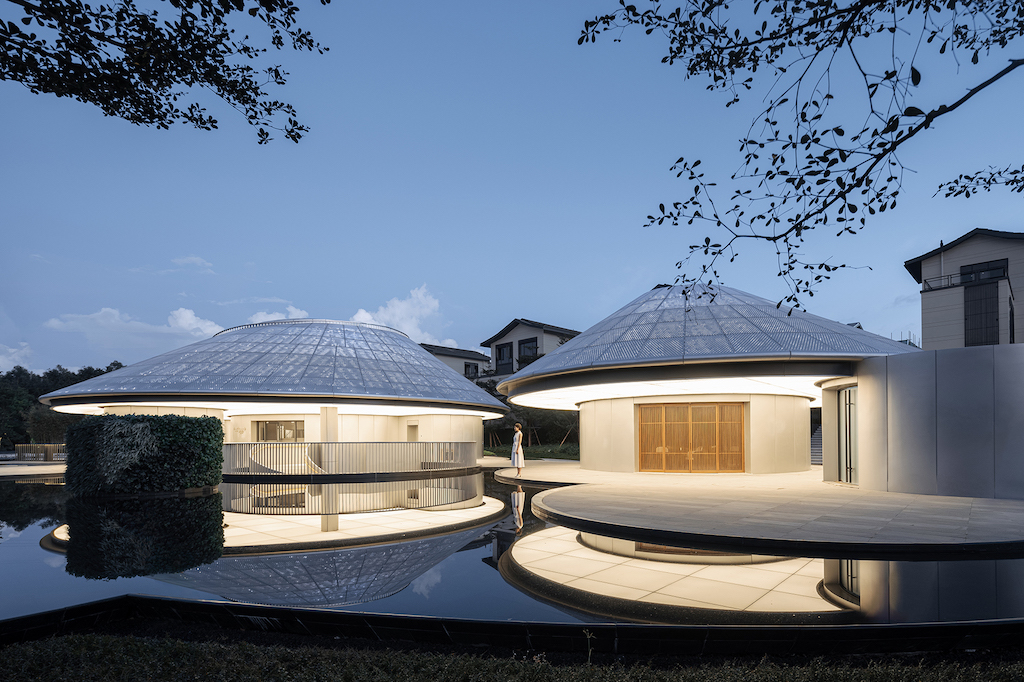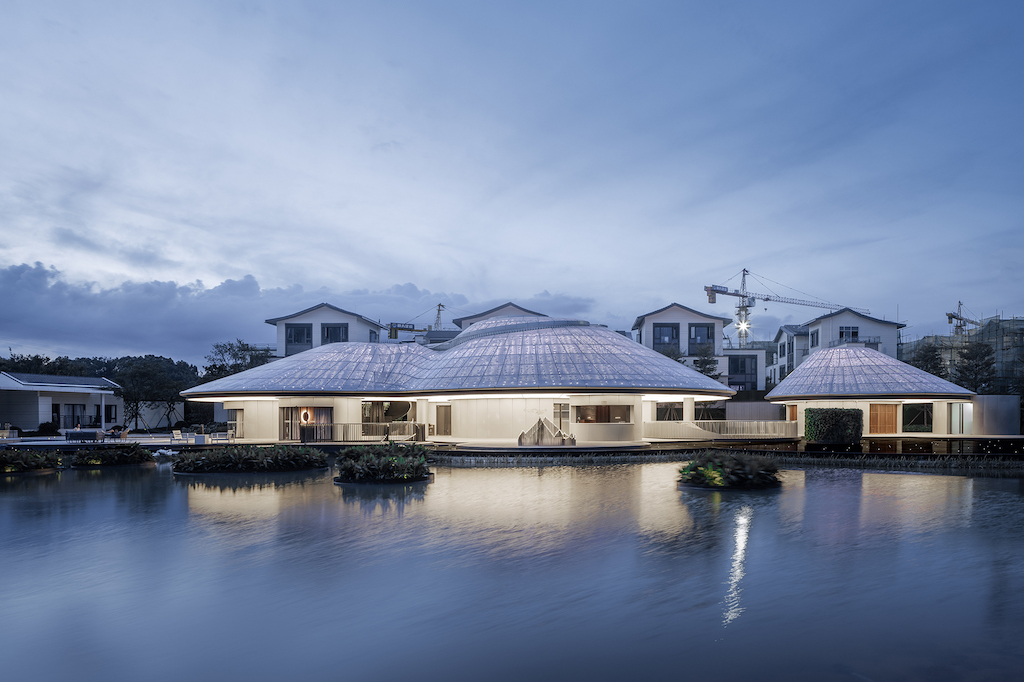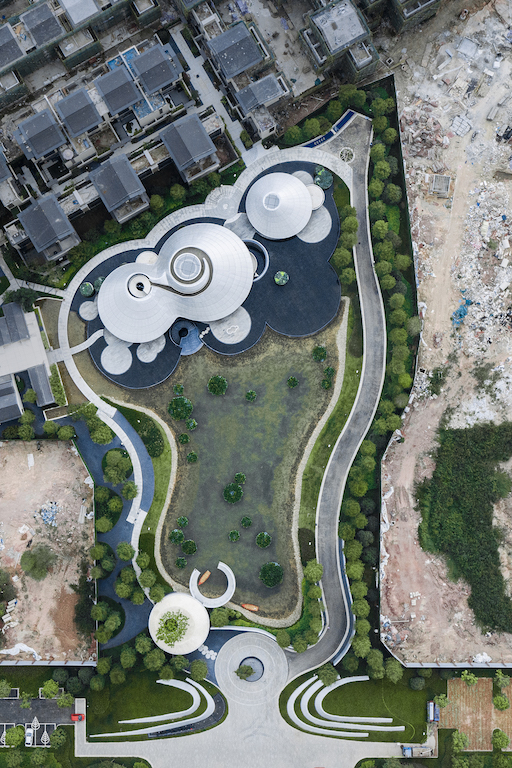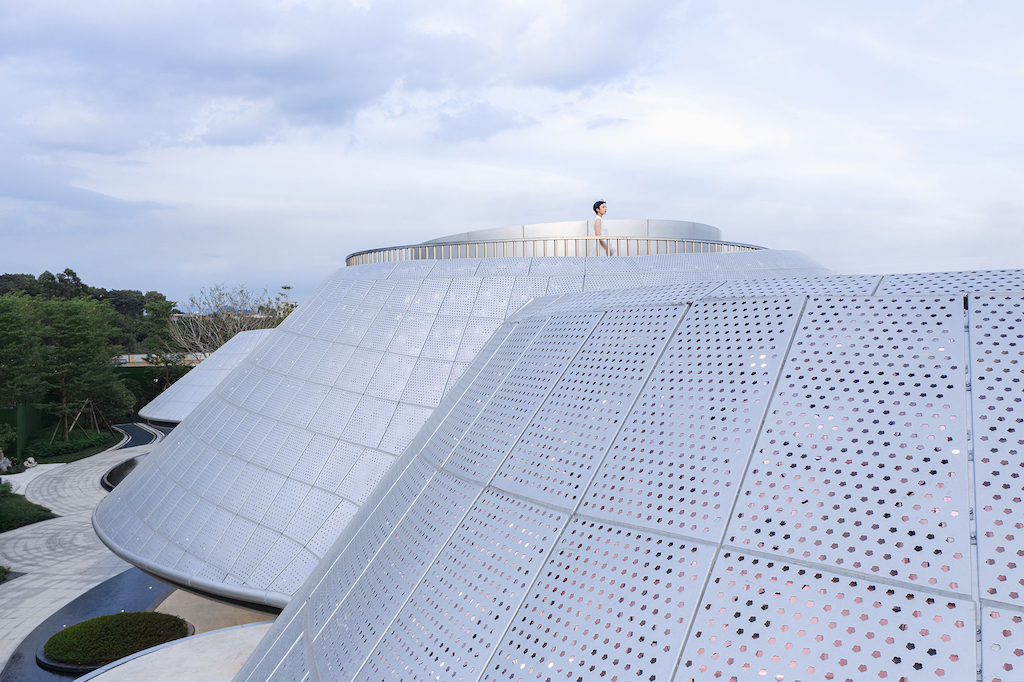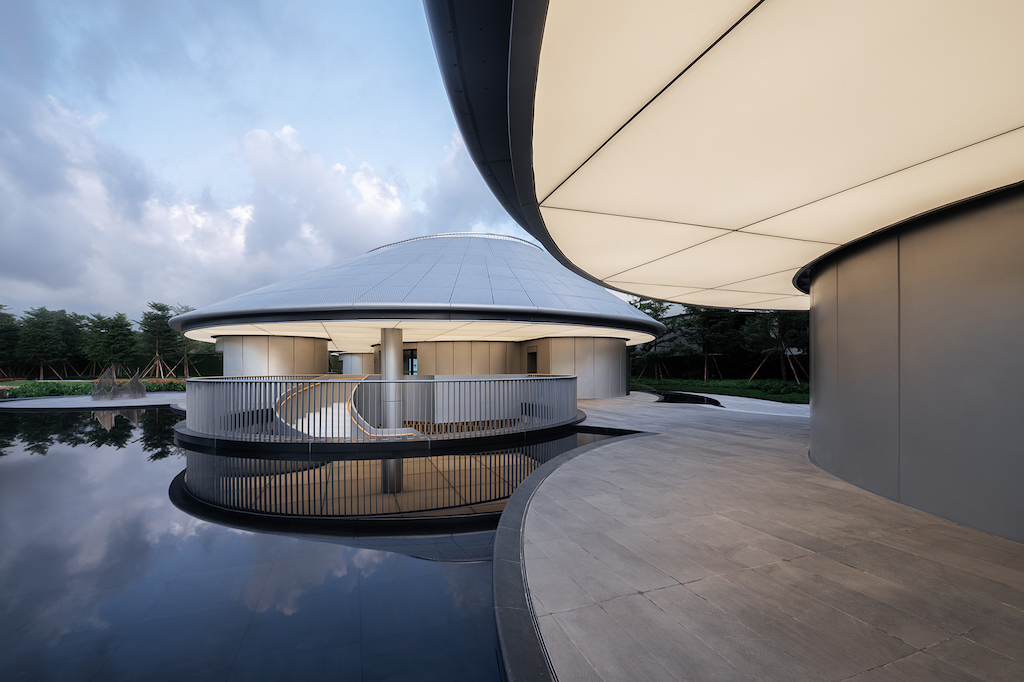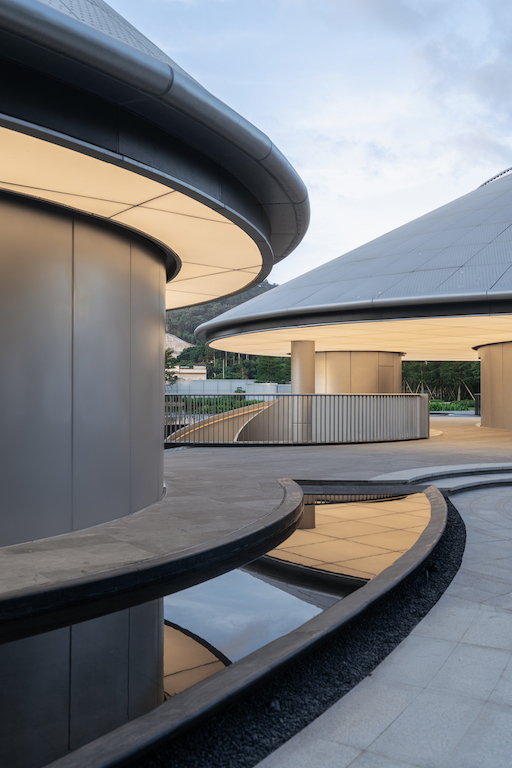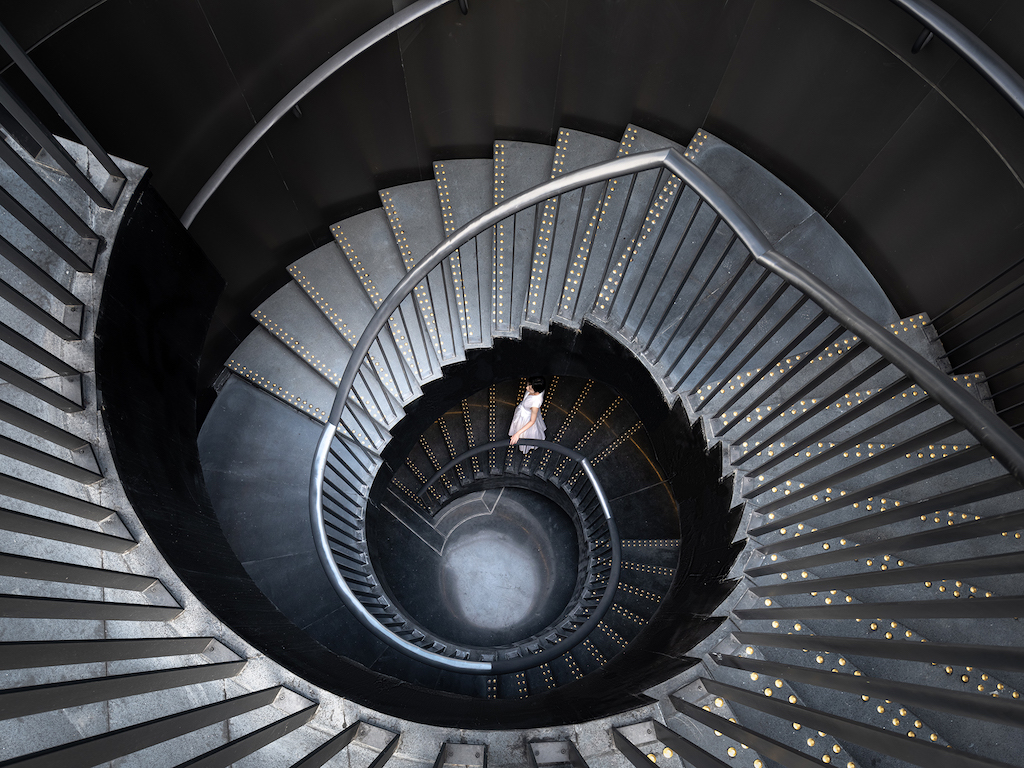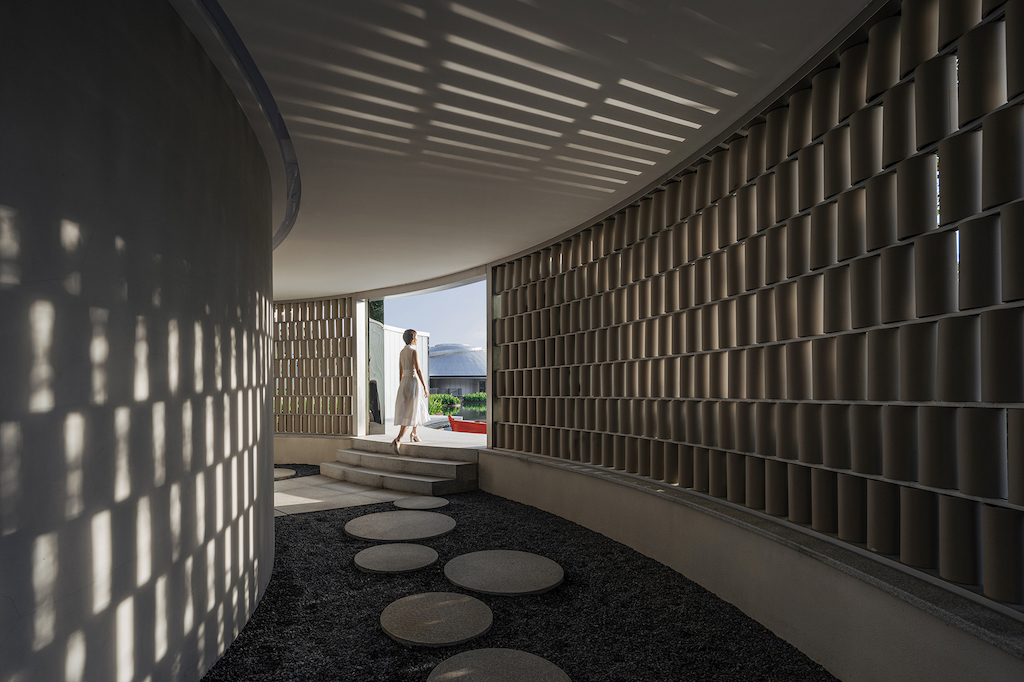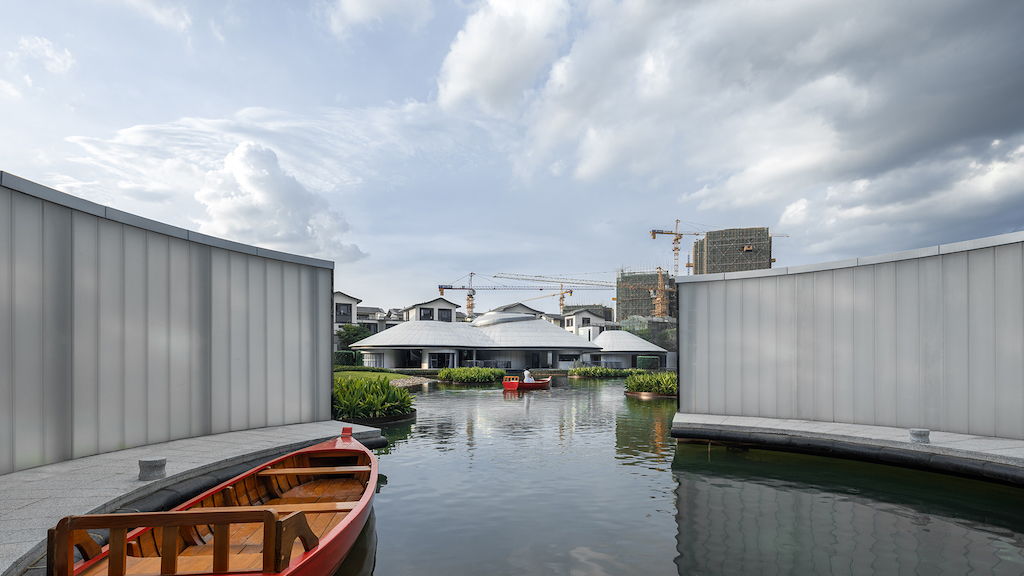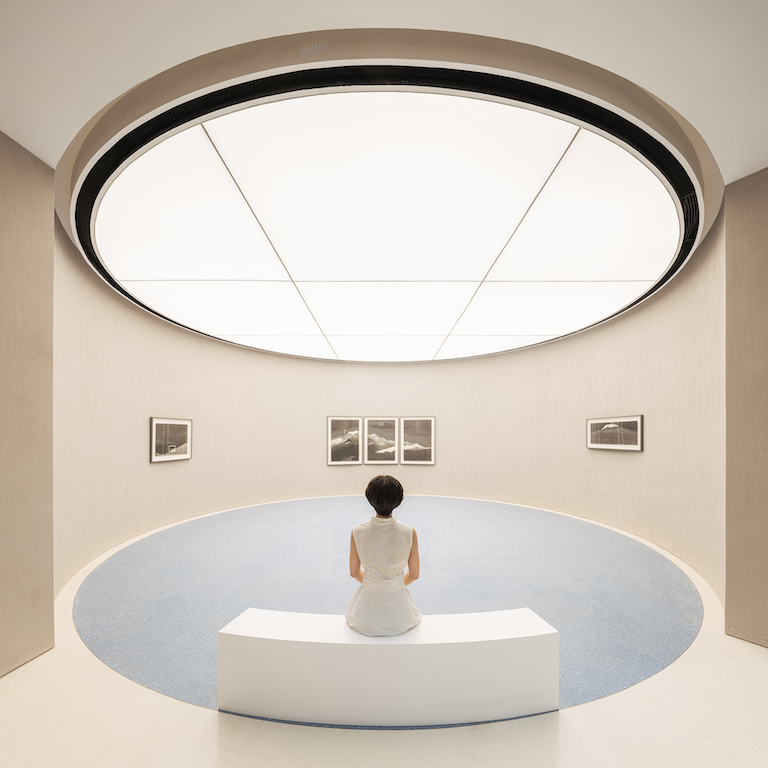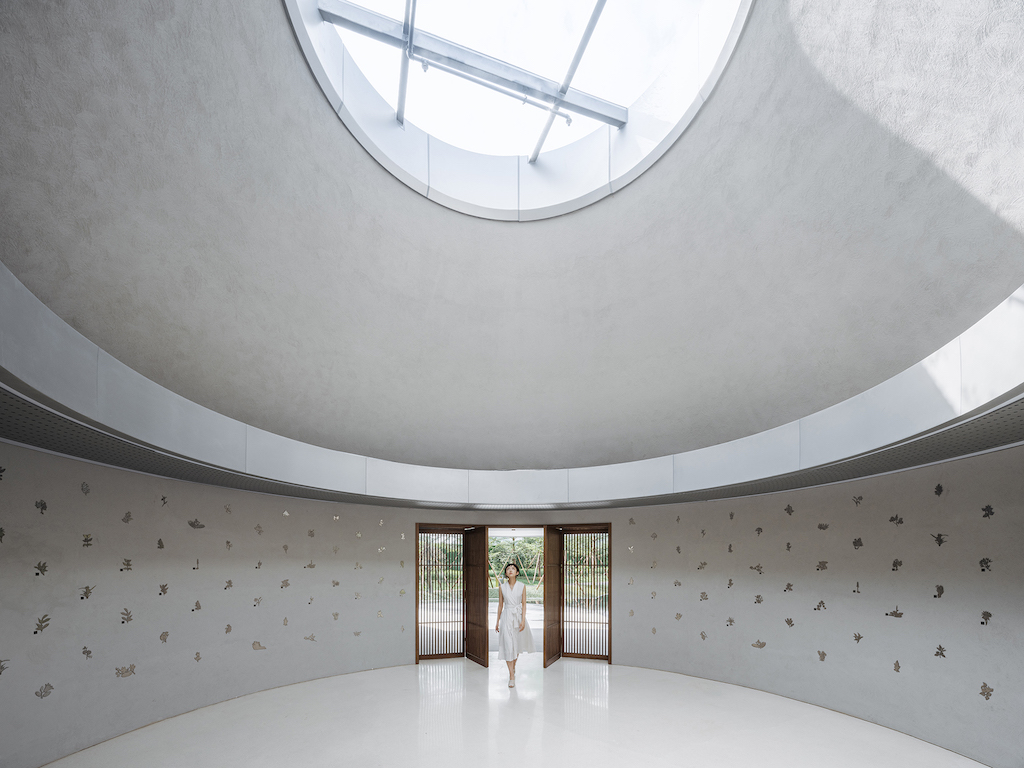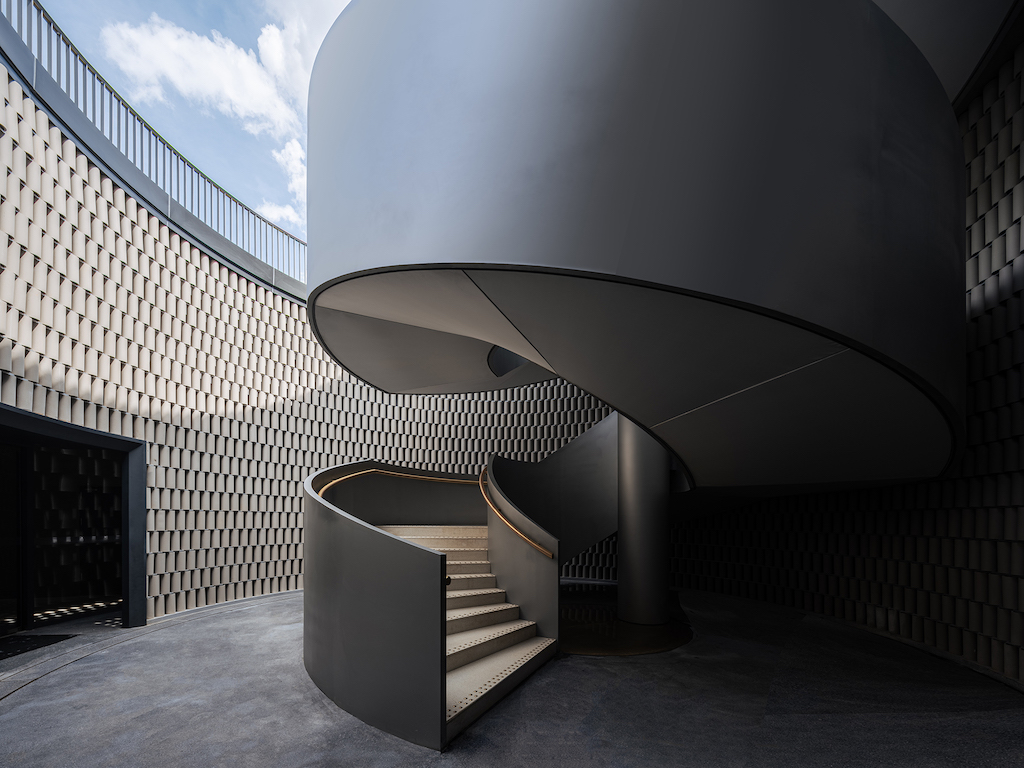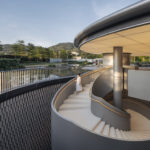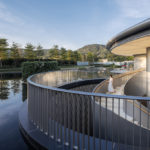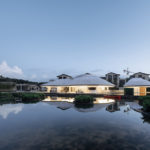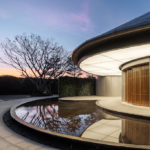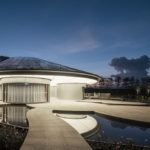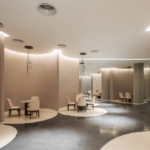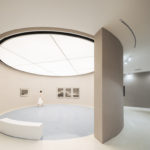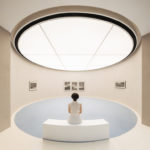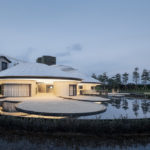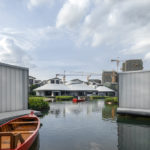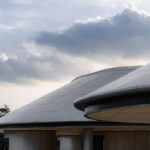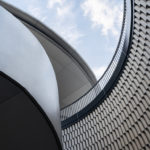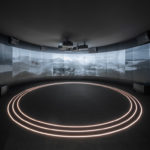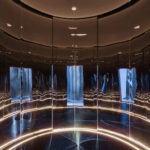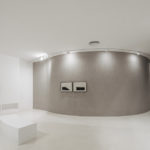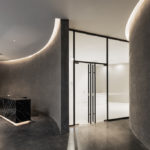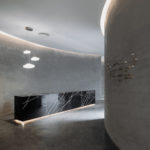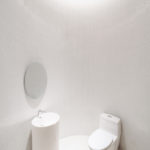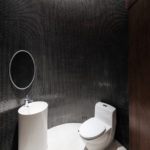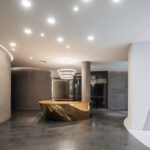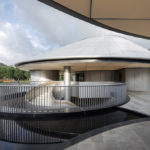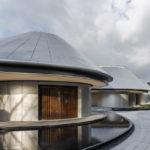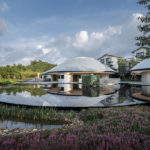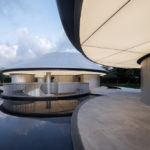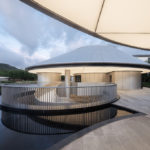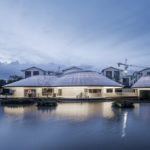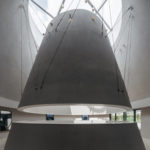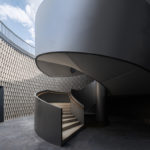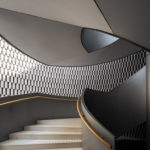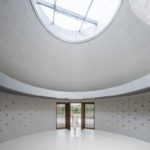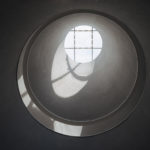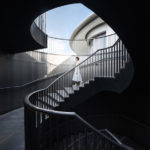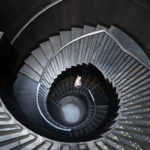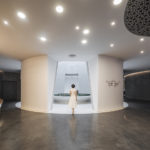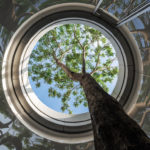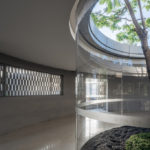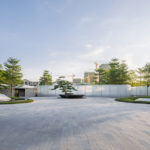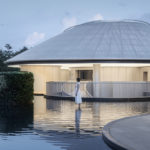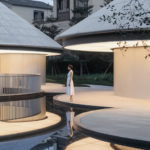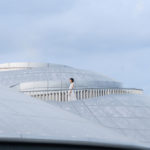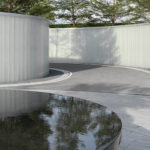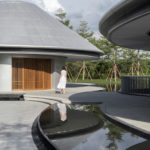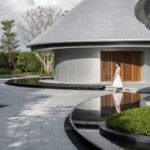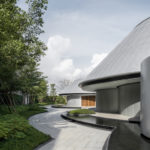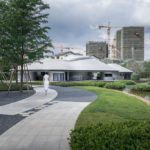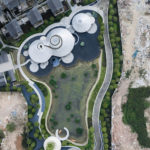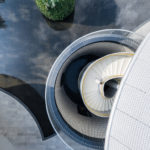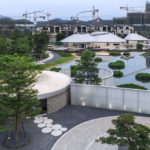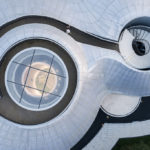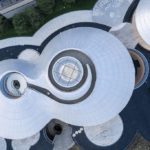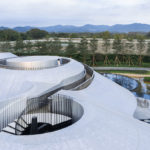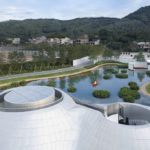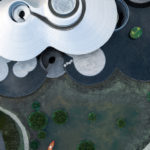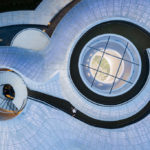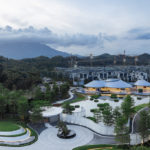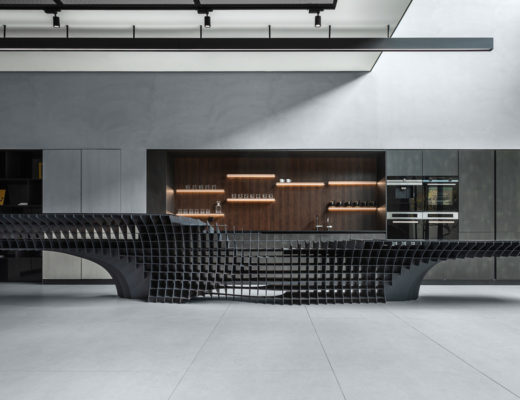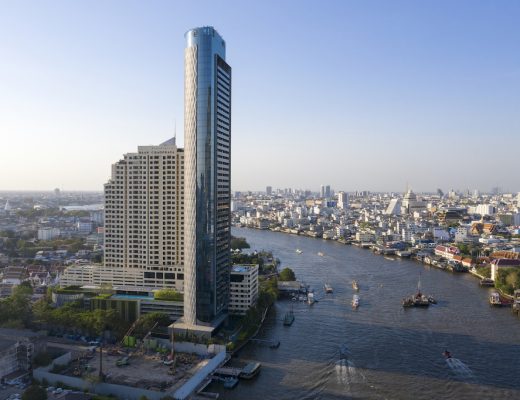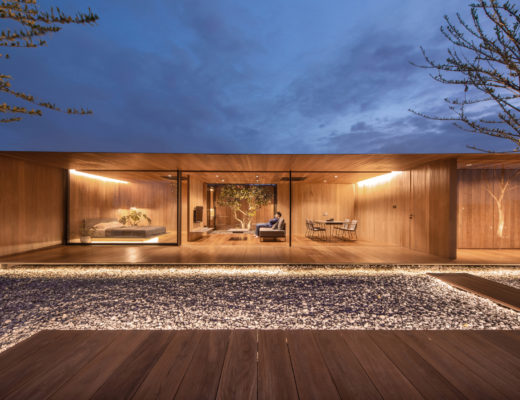When architect Yu Ting, founder of the Shanghai-based practice Wutopia Lab visited Mt Luofu in Canton, the rising mist blocked his view as he walked through the field, shares the architect. With the heavy downpour, Mr Yu had to pause his journey. “Fortunately, it stopped as quickly as it had started. It was at that moment that Mt. Luofu, a well-known Taoist mountain, surfaced. The moment of revealing hit me, like the sudden appearance of a Chinese celestial palace. Like all poets and travellers, I named the moment ‘the sudden emergence of Mt. Luofu’,” says Mr Yu.
Wutopia Lab proposed the Aluminum Mt on Mt. Luofu that would serve as the traditional Chinese Medicine Health Industrial Park Exhibition Centre of Ping An Real Estate and Guangzhou Fangyuan Group.

Careful observations provided further impetus to Mr Yu’s imagination. The sight of the reflections of the Mt. Luofu and Taiping Mountain that faced the south of the site led Mr Yu to visualise a classical and spiritual theme mentioned in the literature of the Chinese garden, which was “one sea and three mountains.” “Immediately I decided that the fish pond should be remodelled,” says Mr Yu. “Along with two other mountains, an artificial mountain serving as a presentation centre would form a new version of ‘one sea and three mountains’, an earthly paradise.”
Using the circle as his basic geometry in this design based on Taoist and Taiji, Mr Yu says that circles and cones were basic geometries to construct the mountain. “An ambiguous mountain was preferable, which would consist of three smaller mountains, influenced by the Taoist doctrine,” he explains.
The ‘sliver’ aluminium board proves to be an ideal material for the mountain. “There should be a moment when the heavy mass and texture of the aluminium material ‘dissolves’, providing a perfect foil for the lightness of the mountain. Thus thinking, I used three different aluminium boards with perforation rates of 45, 60 and 70 so the mountain behaves from dense to sparse from top to bottom. The effect was that the mountain looked overwhelmingly heavy most of the day, but lost its massive look when perceived from certain angles. At night, with the lights on, the mountain would lose its materiality and be transformed into an enormous mountain of lamp. In this way, the mountain assumed an ethereal look,” shares Mr Yu.
The vivid first image of the floating Mt. Luofu stayed with Mr Yu who thought it was only befitting to design a mountain that hovered as it did. Not only did he place all the functions underground, but he also introduced a gigantic metal roof supported by six concrete columns as its body and placed luminous films at the bottom. As a result, when the light films were turned on, the mountain could give a hovering illusion.
The Aluminum Mt. is supported by six concrete columns. To build this 880m2 building with a cantilever structure up to 10 metres, 30 tonnes of iron truss were applied in order to shape the subtle and hovering peaks. Regarding the 11.9-metre spiral staircase, it was an independent structure travelling from the basement to the top, a task that proved one of the most challenging ones on this project.
Mr Yu also designed a water path that leads to the third mountain. The viewers can disembark at the round reception and get aboard a red boat at a dock that was surrounded by U-shaped glass. Travelling past some flowery, round islands, they would arrive at the bottom of the mountain where a staircase and a tunnel ushered them right into its interior. There they can view across the mountain bottom and the water, and meet their upcoming path in the gentle breeze. Then they can enter a big, round sunken garden by a spiral staircase or a lift placed at the entrance to the underground.
In the Aluminum Mt., Mr Yu chose to apply grey colour rather than marble and metal, white or concrete. Grey preseted a perfect and subtle choice to showcase a continuous interior landscape as a Chinese ink painting that echoes to the sudden surface of Mt. Luofu.
The architect wanted to create a slow sense of time by using continuous circles to form the underground space, a bubble-like maze that includes the foyer, display zone, video room, conference room, model exhibition space, art gallery, office, and toilets. “I hoped that visitors could lose their sense of time and space. In a layered maze, we might feel that time had slowed down,” says Mr Yu. “The central exhibition space was a triple-height space, serving as the highest mountain among the three. The other two functioned as sinology space and VIP rooms. Wind blew through the ground floor, underneath the third mountain. What was left was nothing but time.”
Passing through an artificial fog, the viewers climb up a spiral staircase to the top. This provides the second peak of the Aluminum Mt. Visitors can follow the path and reach the top of the mountain. “I used to imagine myself with Mt. Luofu and Taiping Mountain under my control. But today I have become more humble. Looking at the mountains with the breeze blowing, I feel much better,” shares Mr Yu.
The Aluminum Mt. was named the Third Mountain. The client and the architect agreed that since it was constructed on Mt. Luofu, it should not become a sales centre that is eager to show itself off. They wanted it to present a lifestyle that was lost upon us, and dreams that urban residents long for, away from the hustle-bustle of the city life. “In a humanistic space full of symbolic meanings, a space built with modern technology while exhibiting traditional wisdom, we are supposed to feel happiness,” says Mr Yu.
Project details:
Project name: The Aluminum Mountain
Design firm: Wutopia Lab
Chief architect: Yu Ting
Project architect: Xu Yunfang, Li Hao
Project manager: Pu Shengrui
Design team: Li Ziheng, Pan Dali, Kuang Zhou, Huang He
Intern: Wang Ye, Xu Nan
Client: Ping An Real Estate Co., Ltd. & Fineland Group
Lighting consultant: Chloe Zhang, Cai Mingjie
Facade project consultant: Florian Rochereau
Construction drawing design: Shanghai Southeast United Engineering Design Co., Ltd.
Interior construction drawing design: Alignment Studio
Landscape: Z Studio
Location: Guangdong, China
Area: 2,453m2
Year of completion: 2020
See the full image gallery here:
Photography: CreatAR Images
You might also like:
Jingu Phoenix designs modernist Shenzhen restaurant with art gallery-like fluid spaces against a mountain backdrop
Phoebe Says Wow architects designs Boolean birdhouse pavilion in remote Taiwanese mountains

